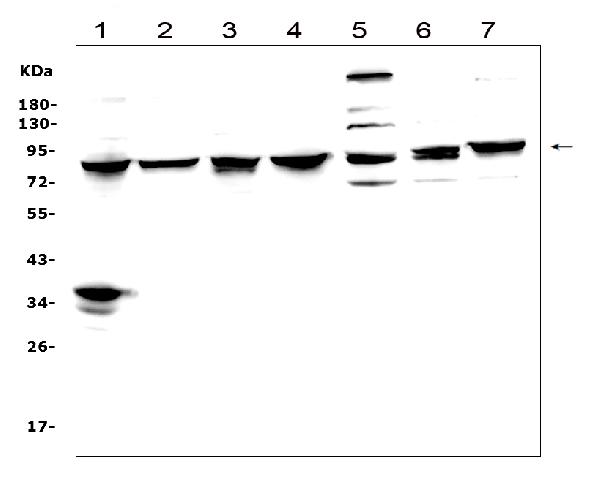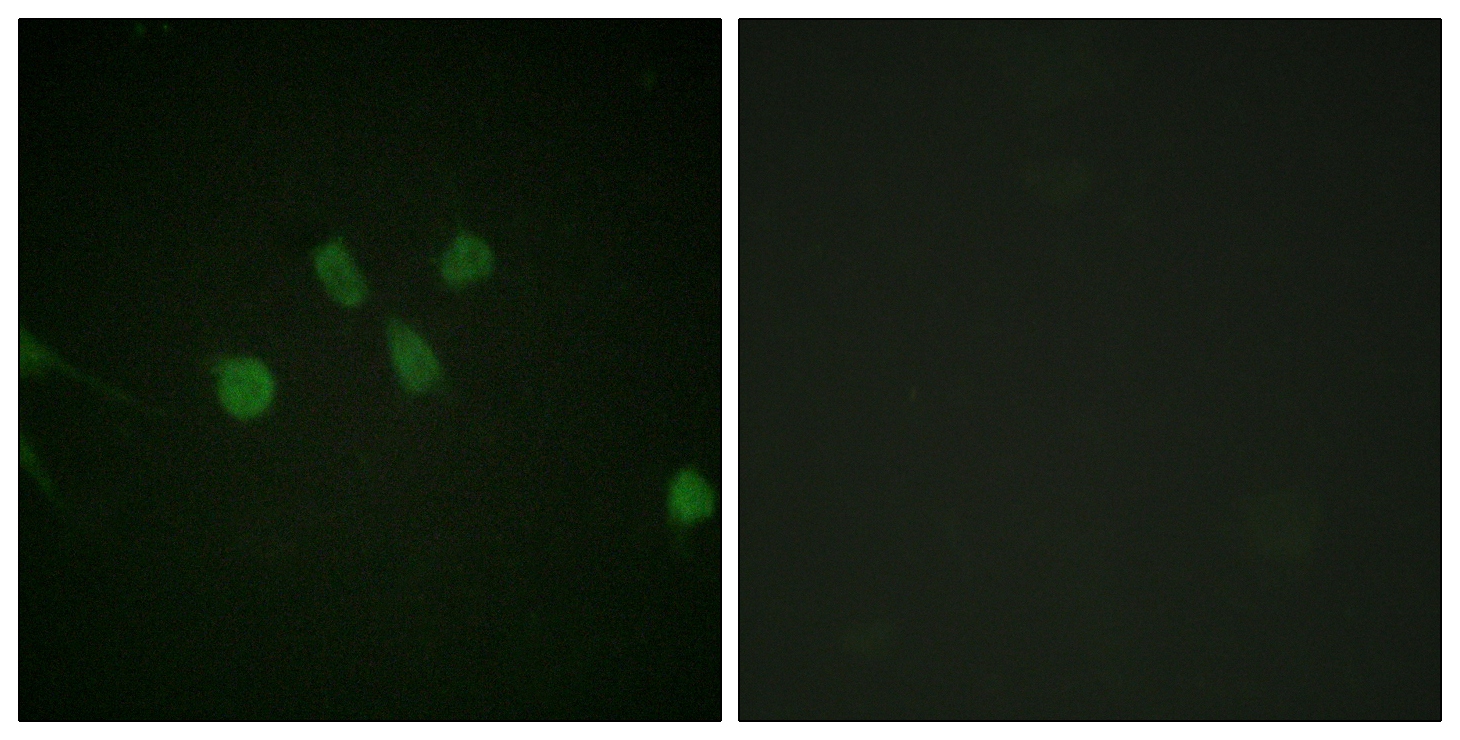MAD1 antibody [9B10]
GTX48641
ApplicationsImmunoPrecipitation, Western Blot, ELISA
Product group Antibodies
TargetMAD1L1
Overview
- SupplierGeneTex
- Product NameMAD1 antibody [9B10]
- Delivery Days Customer9
- Application Supplier NoteWB: 1:200-1:1000. IP: 1:100. ELISA: 1:5000-1:20000. *Optimal dilutions/concentrations should be determined by the researcher.Not tested in other applications.
- ApplicationsImmunoPrecipitation, Western Blot, ELISA
- CertificationResearch Use Only
- ClonalityMonoclonal
- Clone ID9B10
- Concentration1 mg/ml
- ConjugateUnconjugated
- Gene ID8379
- Target nameMAD1L1
- Target descriptionmitotic arrest deficient 1 like 1
- Target synonymsMAD1, MVA7, PIG9, TP53I9, TXBP181, mitotic spindle assembly checkpoint protein MAD1, MAD1 mitotic arrest deficient like 1, MAD1-like protein 1, mitotic arrest deficient 1-like protein 1, mitotic checkpoint MAD1 protein homolog, mitotic-arrest deficient 1, yeast, homolog-like 1, tax-binding protein 181, tumor protein p53 inducible protein 9
- HostMouse
- IsotypeIgG2b
- Protein IDQ9Y6D9
- Protein NameMitotic spindle assembly checkpoint protein MAD1
- Scientific DescriptionMAD1L1 (also called mitotic spindle assembly checkpoint protein, MAD1A, MAD1-like 1 and HsMAD1) is a component of the spindle-assembly checkpoint that prevents the onset of anaphase until all chromosomes are properly aligned at the metaphase plate. MAD1L1 has a role in the correct positioning of the septum and is required for anchoring MAD2L1 to the nuclear periphery. MAD1L1 forms a homodimer and also heterodimerizes with MAD2L1 in order to form a tetrameric MAD1L1-MAD2L1 core complex. Perturbation of the original MAD1L1-MAD2L1 structure by the spindle checkpoint may decrease MAD2L1 affinity for MAD1L1. CDC20 can compete with MAD1L1 for MAD2L1 binding, until the attachment and/or tension dampen the checkpoint signal, preventing further release of MAD2L1 on to CDC20. MAD1L1 is also able to interact with the BUB1/BUB3 complex and the viral Tax protein. MAD1L1 is a nuclear protein that is seen to move from the beginning to the end of mitosis from a diffusely nuclear distribution to the centrosome, to the spindle midzone and finally to the midbody. Multiple isoforms may exist for this protein (MAD1L1 and MAD1L2). MAD1L1 is induced by TP53 and is phosphorylated by BUB1. MAD1L1 is hyperphosphorylated in late S through M phases or after mitotic spindle damage. Defects in MAD1L1 are involved in the development and/or progression of various types of cancer.
- Storage Instruction-20°C or -80°C,2°C to 8°C
- UNSPSC12352203





